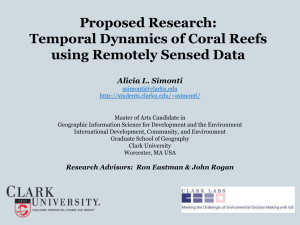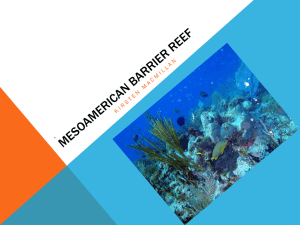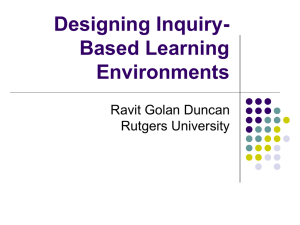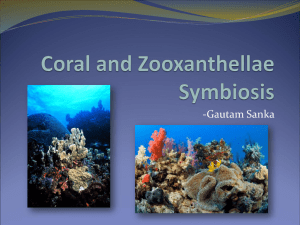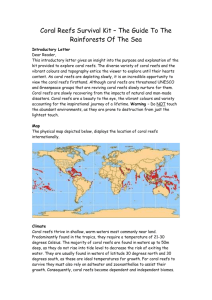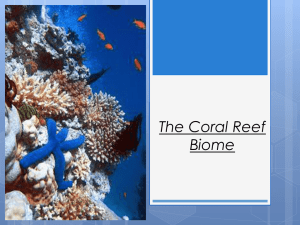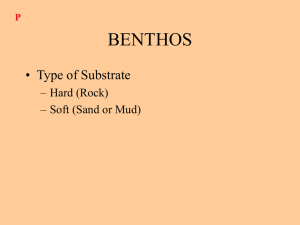Neritic Zone
advertisement
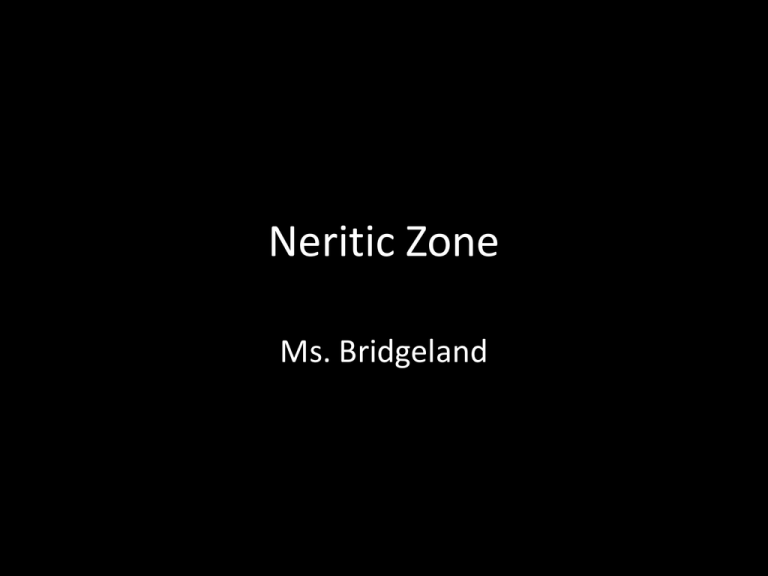
Neritic Zone Ms. Bridgeland Where is the Neritic Zone? • Extends from the low-tide line out to the edge of the continental shelf • Why is the neritic zone home to so many living things? The Neritic Zone is home to so many living things because: • The shallow water over the continental shelf receives: – Sunlight – Steady supply of nutrients washed from the land into the ocean – The light and nutrients enable large plantlike algae to grow – Large quantities of algae is a food source and shelter for other organisms Neritic Zone • Of the three ocean zones, it has the most constant conditions and is easiest for organisms to live in Upwelling • In the Neritic Zone, upwelling currents bring nutrients from the bottom to the surface. – These nutrients support plankton (the base of food webs) – Major fisheries in upwelling areas include: • Monterey Canyon (off the California coast) • Newfoundland’s Grand Banks • Georges Ban (off the New England coast) Coral Reefs Coral Reef • A diverse habitat found in the Neritic Zone • Looks like it is made of rock, but is actually made of living things • Created by colonies of tiny coral animals • Coral animals: each produce a hard structure that surrounds its soft body – When the coral dies, the empty structure remains Coral Reefs can only form in shallow, tropical ocean waters because: – Microscopic algae live in the bodies of the coral animals – Provide food for the corals – Algae need warm temperatures and sunlight – Reefs grow above the continental shelves or around volcanic islands where the water is shallow Atolls • A ring-shaped reef surrounding a shallow lagoon • An atoll begins as a reef that closely surrounds the edges of a volcanic island • As the sea-floor sinks, the island sinks with it, and the reef continues to grow upward • The island sinks until it is completely underwater, and you can only see the atoll Atoll How Atolls Form Types of Coral • Elkhorn • Brain • Plate • Star Elkhorn Coral Brain Coral Plate Coral Star Coral Coral Reef Animals • Octopus • Spiny lobsters • Shrimp • Fish Animals in the Coral Reef What produces the fine, soft sand around the reef? • The Parrotfish grinds up the broken coral inside their bodies, which produces the sand Benefits of the Coral Reef • Protect the coastline from violent storms • The reefs prevent waves from severely eroding the land Harm to Coral Reefs • Coral grows only a few millimeters per year, so if a boat anchor drags across it, reefs cannot easily recover • Changes in water temperature and clearness endanger the reefs • Cloudy water harms the algae because it reduces the amount of light reaching them • Coral animals need to eat the algae to live



